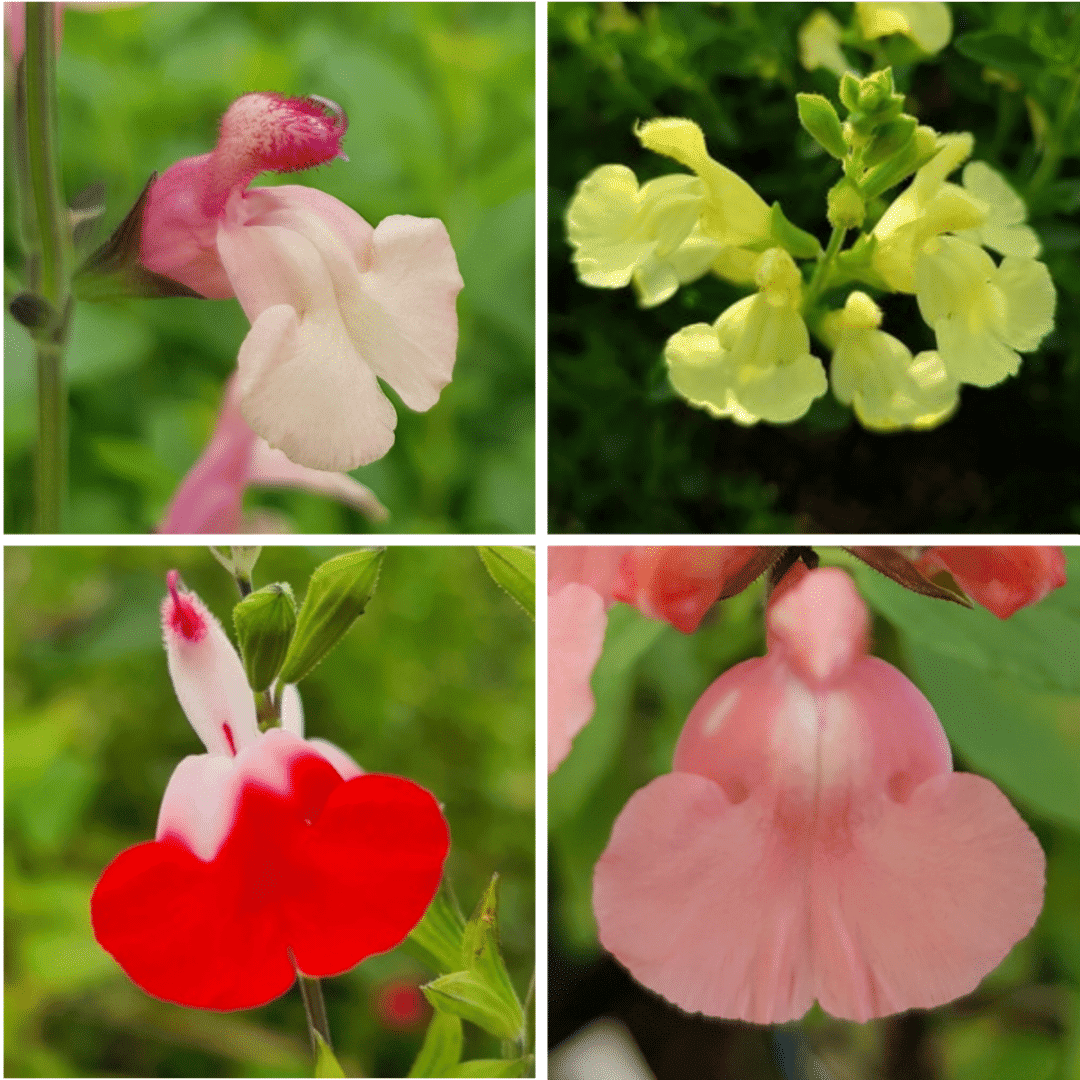
Salvia greggii (commonly known as Autumn Sage) is a compact, bushy perennial that has become a favorite in gardens due to its stunning range of flowers, delightful aroma, and low-maintenance nature. This hardy variety typically grows to a height of up to 70cm and produces vibrant, colorful blooms from spring through to late autumn. Whether you’re looking to add a splash of color to your garden or create a pollinator-friendly haven, Salvia greggii is a versatile choice that can thrive in a variety of growing conditions.
Salvia greggii is well-known for its striking flower colors, which include shades of red, pink, purple, and even white, often in multiple colors on the same plant. The flowers are tubular, attracting a range of pollinators such as bees, butterflies, and hummingbirds, which makes it a perfect choice for a wildlife-friendly garden. The foliage is aromatic, with small, deep green leaves that release a pleasant scent when touched. This combination of beauty and practicality makes it an excellent addition to any garden, from cottage gardens to more contemporary designs.
This salvia is perfect for gardeners looking for a plant that doesn’t require constant attention. Once established, Salvia greggii thrives in dry, sunny conditions, making it an ideal choice for areas with less rainfall or for gardeners looking to conserve water. It is tolerant of a range of soil types, as long as the soil is well-drained. This ability to adapt to various environments, coupled with its hardiness, makes Salvia greggii an easy-to-care-for, reliable plant in any landscape.
? Light & Position: Salvia greggii prefers a sunny location, though it will tolerate partial shade. Full sun will encourage the plant to bloom profusely, while partial shade can still produce beautiful flowers but may lead to less vigorous growth. Plant it in a position that receives at least 6 hours of sunlight a day for optimal performance.
? Soil Requirements: One of the reasons Salvia greggii is so well-suited to low-maintenance gardens is its ability to thrive in well-drained soil. While it is not particularly picky about soil types, it performs best in light, loamy, or sandy soil. Avoid planting in heavy, waterlogged soil, as this can lead to root rot. If your garden tends to retain water, you can improve drainage by adding organic matter or planting in raised beds.
? Watering: Salvia greggii is drought-tolerant once established, making it ideal for xeriscaping or water-wise gardens. During the first year of growth, it’s important to water regularly until the plant becomes established. After that, Salvia greggii will thrive with minimal watering. Be sure to water it thoroughly, but allow the soil to dry out between waterings to avoid overwatering.
To keep your Salvia greggii healthy, compact, and blooming well throughout the growing season, regular pruning is recommended.
?? Spring Pruning (Late March): Once the frost has passed, it’s time to prune back the top growth of your Salvia greggii. Prune it to just above the base, where you’ll see new shoots starting to appear. This helps to promote fresh growth and encourage a bushier habit.
? Deadheading: As flowers begin to fade, deadhead spent blooms to encourage additional flowers. This can prolong the blooming period, giving you even more vibrant colors throughout the season.
?? Cutting Back for Winter (Optional): In regions with harsh winters, consider cutting the plant back further in late autumn, leaving just a small stub to protect the crown during the colder months. This will also help prevent any potential fungal diseases from taking hold.
Tip: Salvia greggii can be propagated from cuttings, typically taken in late spring or early summer. Simply take 8-10 cm tips of new growth and root them in a container of compost. They can be planted out once they’re well-established.
There are many reasons why gardeners love Salvia greggii:
? Vibrant Blooms: This plant produces a long-lasting display of color from spring until late autumn, with flowers in a variety of hues including reds, pinks, purples, and white. It’s an excellent choice for adding year-round interest to your garden.
? Pollinator-Friendly: The tubular flowers are particularly attractive to hummingbirds, bees, and butterflies, making it an excellent choice for those looking to support local wildlife.
? Drought-Tolerant: Salvia greggii is known for its ability to withstand periods of drought, making it a fantastic choice for water-wise gardens or areas with low rainfall.
? Low Maintenance: Once established, Salvia greggii requires minimal care. It’s perfect for gardeners who want a reliable, resilient plant that won’t require constant attention.
? Versatile: Whether planted in borders, containers, or as a standalone specimen, Salvia greggii works well in many garden styles. Its compact size makes it suitable for small gardens or as a filler plant in larger landscapes.
Some of the most popular varieties of Salvia greggii include:
Whether you’re designing a pollinator-friendly garden, a water-efficient landscape, or simply looking for a hardy, beautiful perennial, Salvia greggii is an excellent choice. Its low-maintenance nature, vibrant blooms, and versatility make it a perfect fit for gardeners of all levels. With minimal care and attention, Salvia greggii will reward you with a stunning display of color year after year.